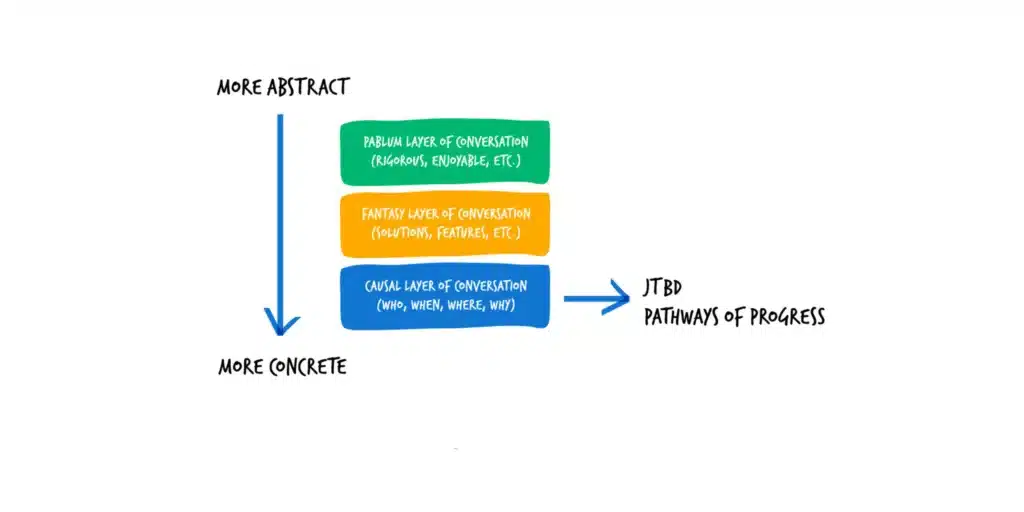What causes people to change?
Jobs to be Done comes from the notion that people wake up and say “Today’s the day I need to do something new”.
When speaking to customers to understand the underlying causality behind a decision to buy/not buy, there are a few obstacles in front of us. There are also many mistakes we can make, as I recently discussed in the Mind the Product podcast.
Get past the surface crap people tell themselves.
People will say why they bought something, but it’s rarely the true reason why they did so.
But we have to get past the surface crap people tell themselves. We give the easy answer, the answer people will accept and move on. But to take the first answer isn’t really getting to the underlying causality.
Let’s say you ask someone how was their day? “Oh, good” they’ll tell you. That answer alone tells you it wasn’t a good day. So how do we get past what people say to get to what they really mean?
The progress your users are trying to make is the same; however, they’ll use very different language to describe it.
Unpack the language of customers by digging into the layers.
Unfortunately, customers don’t have a clue.
And when they think they have a clue, they still don’t have a clue. We can dig into what they really mean by unpacking the layers of language.
The pablum layer.
This is where they make small talk. I need it to be easier, I need it to be faster. But we don’t ask WHY.
The fantasy/nightmare layer.
You get to this layer when you ask why. They say all the things and the features they want.
The causal layer.
But what you need to do is get to the last layer, the causal layer. This is where we uncover the who, the where, the when, and the why.
It helps us to then ask questions like: What is this [product] going to do for you? What can’t you do today?
The Layers of Language

Finding underlying causality
When you’re interviewing customers, you’re most likely to have the who but not the where, when, why.
You can’t just build based on who.
If you do, you run the risk of going in with a hypothesis to prove and what happens is… you end up talking about your product and not the customers’ lives.
I usually start with JTBD interviews to understand the difference between what they say and what they do, and to understand the things that happen to them or the things they want to happen – what we call the “causal mechanisms.”
From qualitative interviews, you’re able to actually see behaviors, and you can look into the data analytics and actually see what’s happening.
It’s almost like theory development, to understand how to look at big data. That’s how we end up being able to see it and size it, and then we can decide how to actually build better experiences to actually deliver on the jobs.
Looking to stop relying on hypotheses?
At Re-Wired we help you to stop looking at your customer through the lens of your product. Learn more about what to do if you’re customers aren’t telling you the truth. Or you can see how to understand your customers’ behavior.